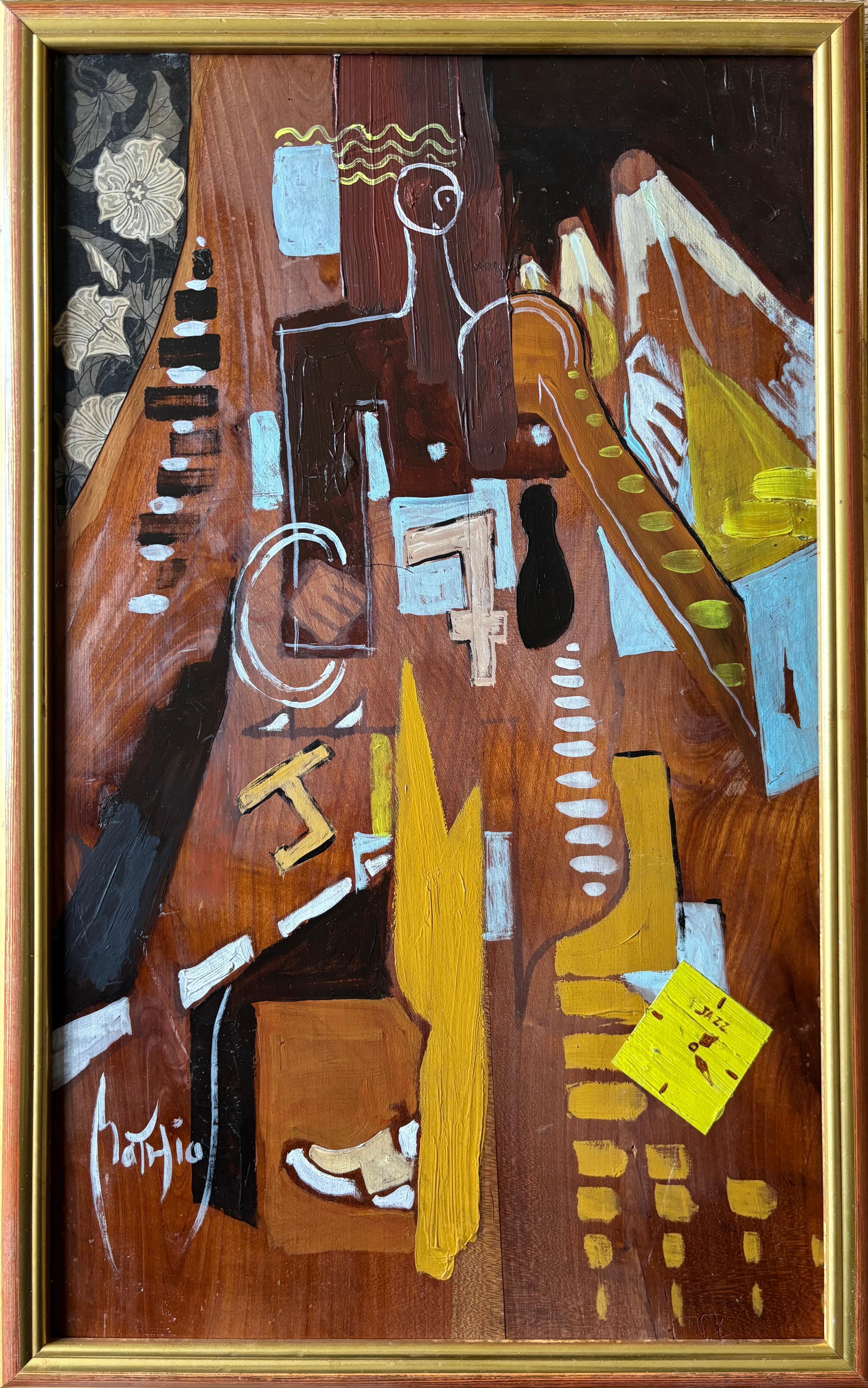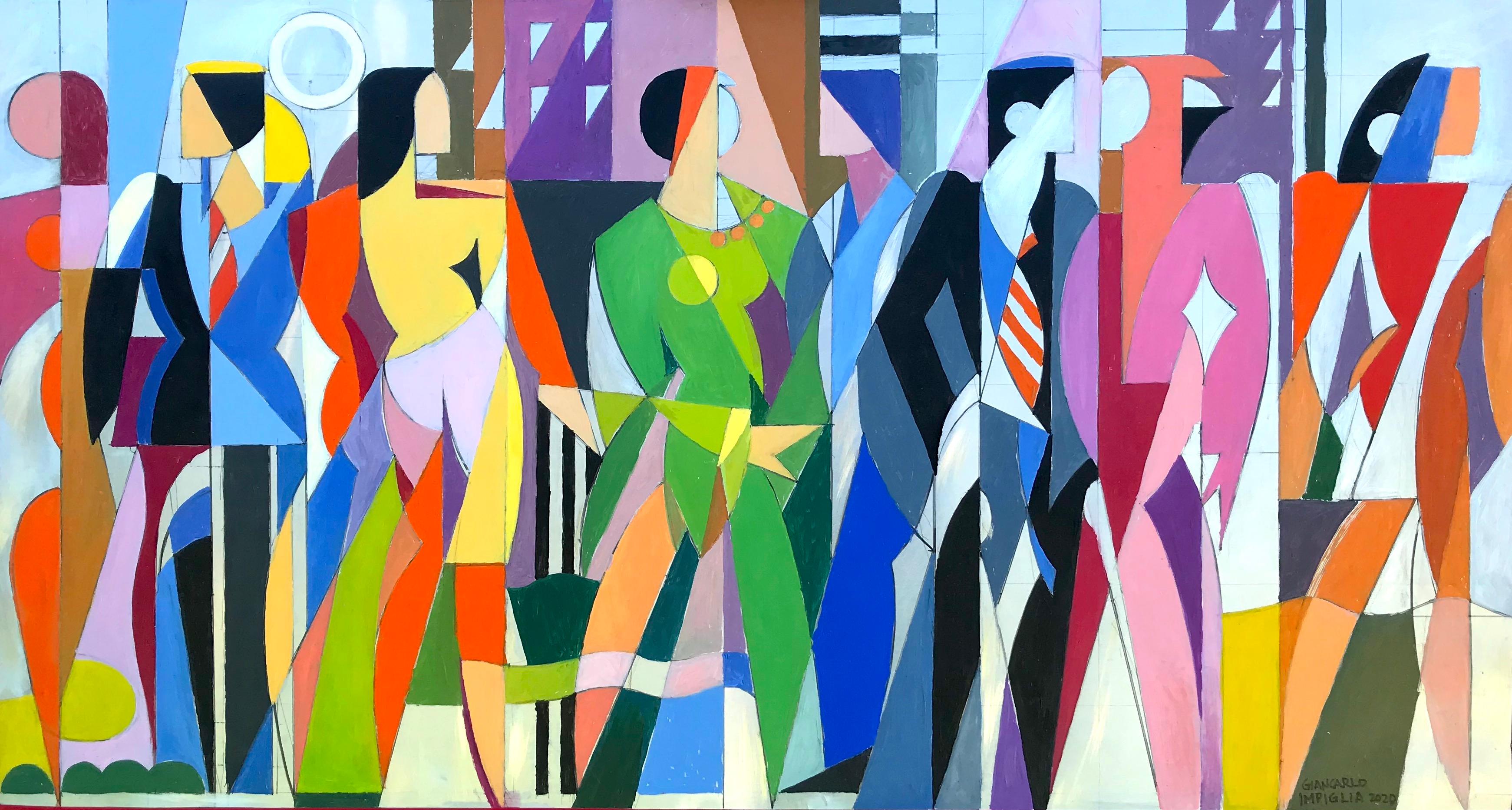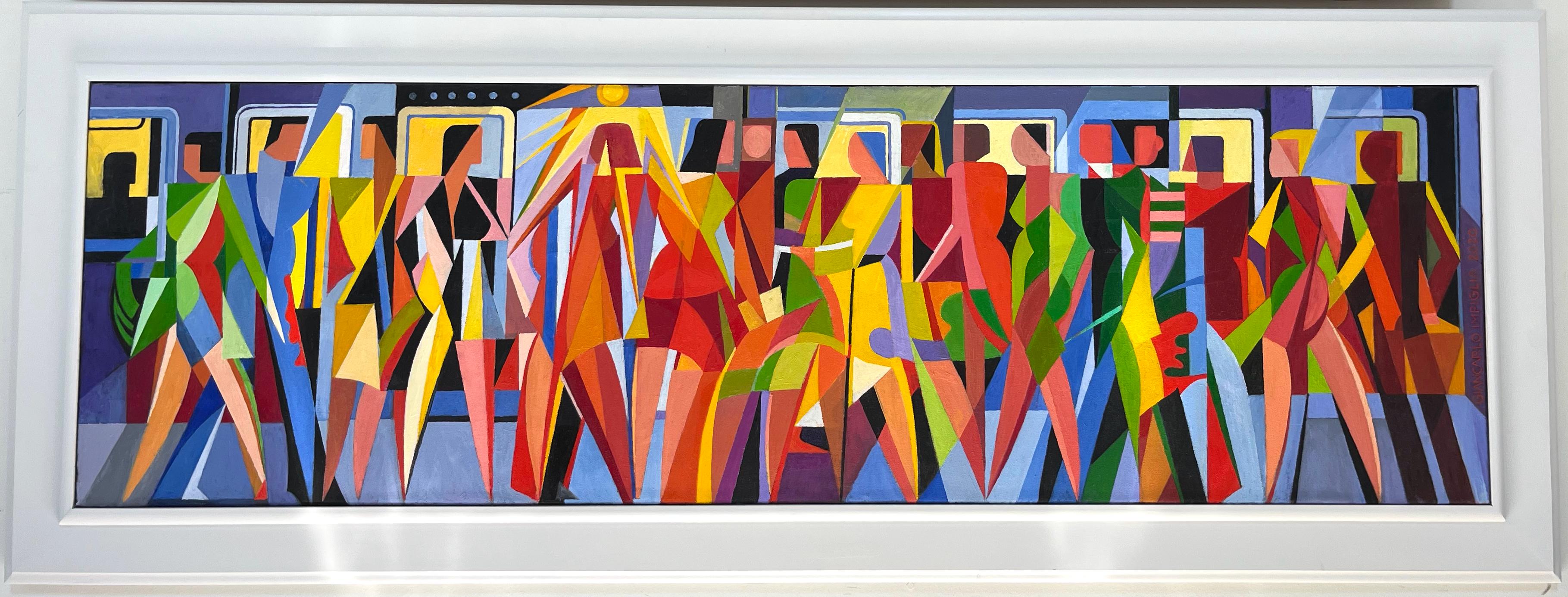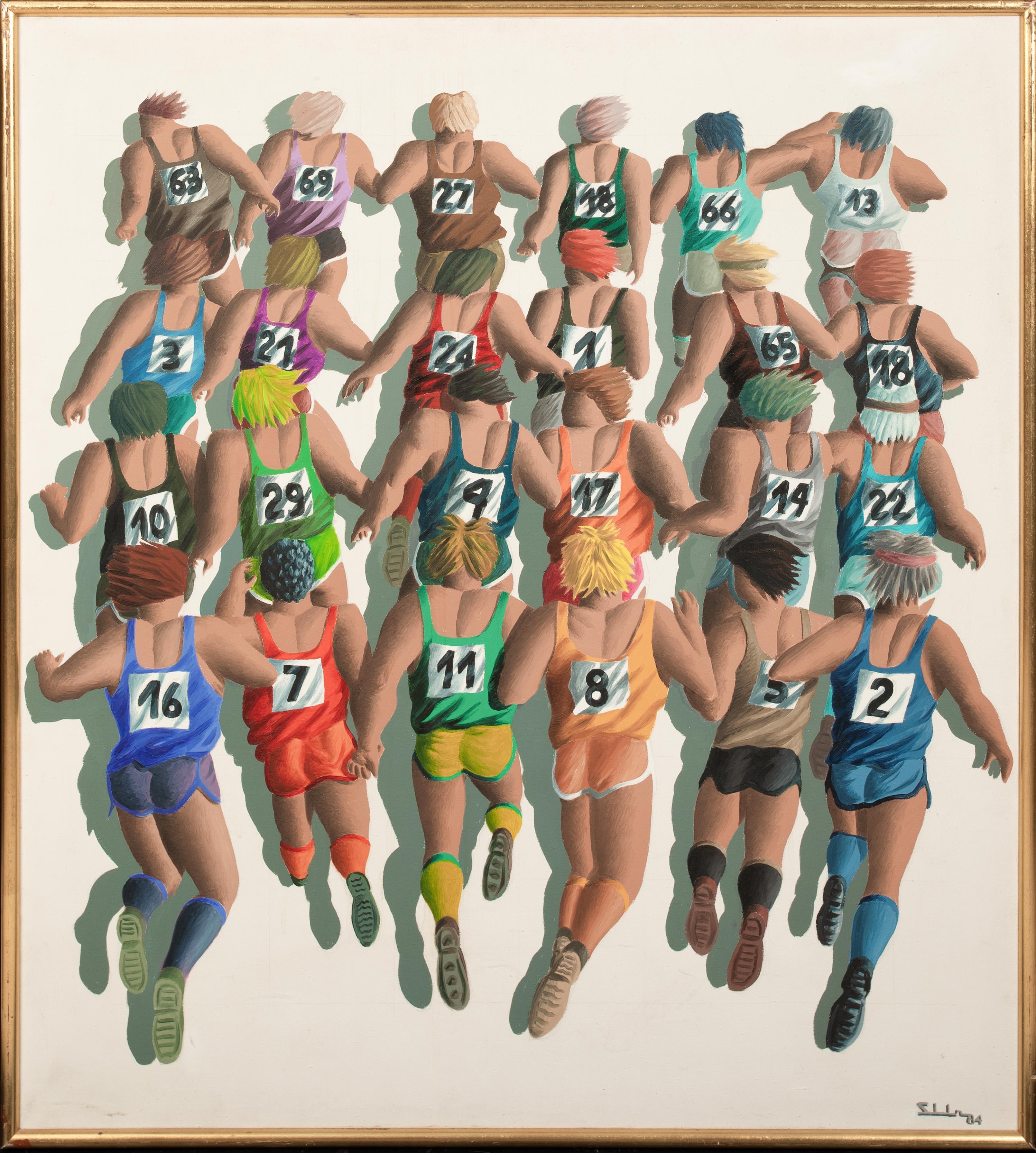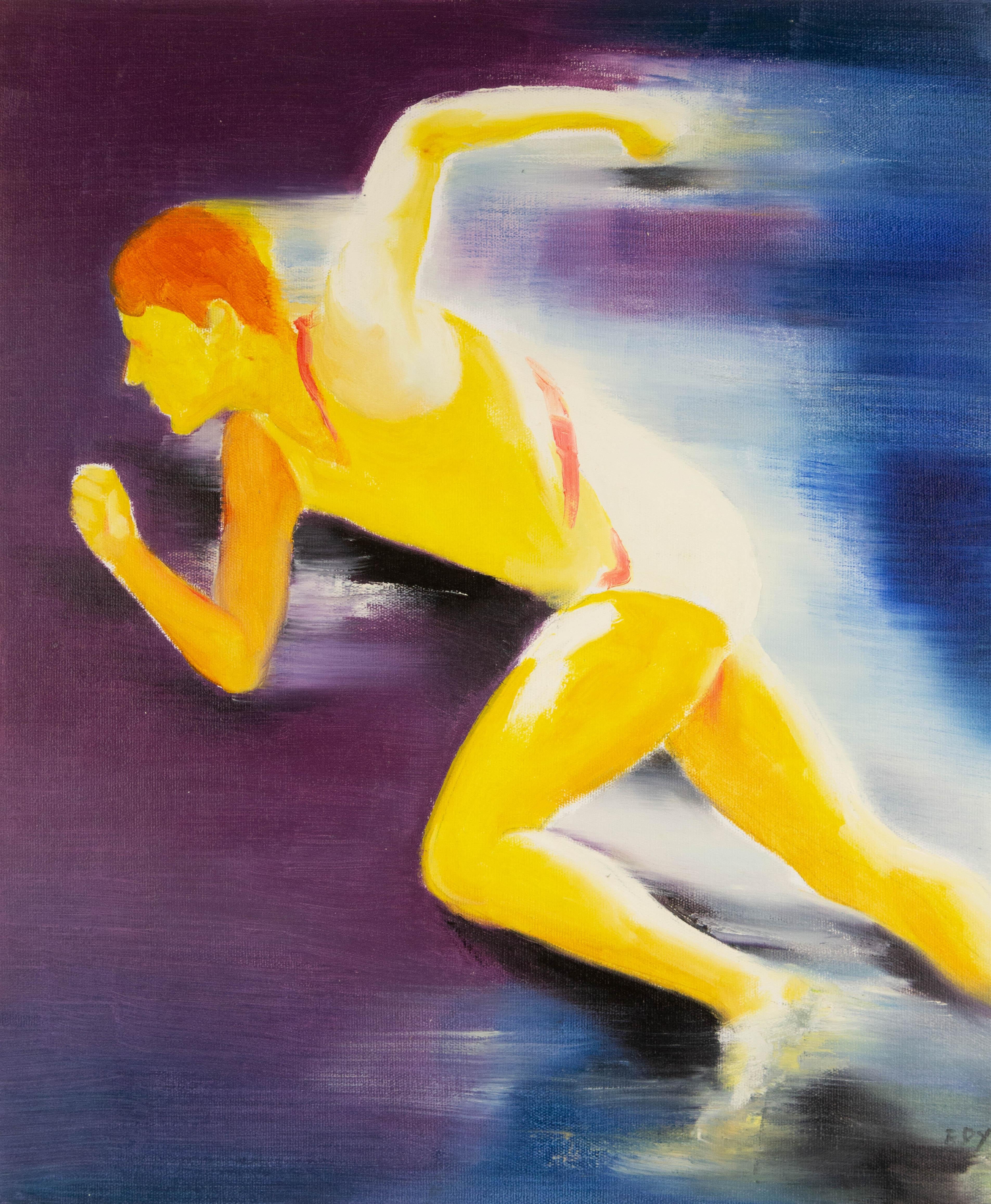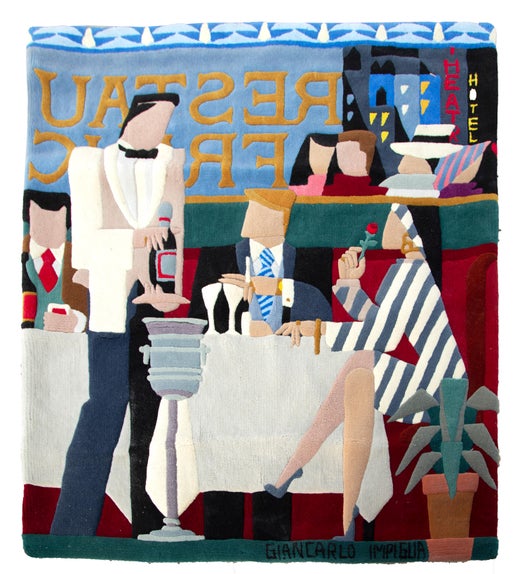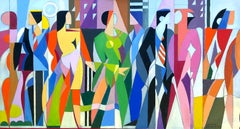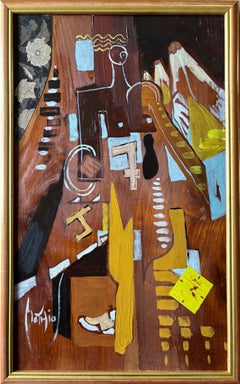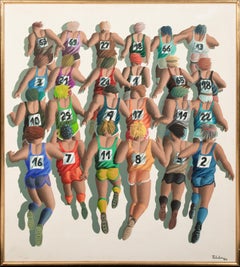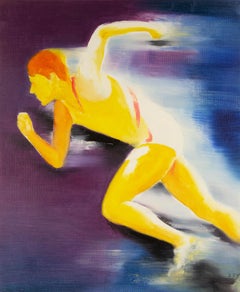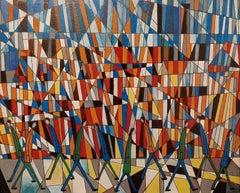Items Similar to Dynamic cubist style oil painting "Marathon" runners and Olympics
Want more images or videos?
Request additional images or videos from the seller
1 of 8
Giancarlo ImpigliaDynamic cubist style oil painting "Marathon" runners and Olympics2022
2022
$12,000
£9,082.72
€10,458.60
CA$17,071.25
A$18,492.39
CHF 9,736.99
MX$224,459.38
NOK 121,432.55
SEK 114,811.63
DKK 78,076.50
About the Item
Iconic master Giancarlo Impiglia's first work of 2022.
Born in Rome, Impiglia moved to New York in the 70s, where he established a signature style on the shoulders of Futurism and Cubism, his technical skill underpinning his eclecticism and allowing him to indulge in an appetite for complexity. Whereas at a glance his vibrant paintings with their dynamic compositions may seem simply aesthetically pleasing, their deliberate beauty is a critique on society’s preoccupation with materialism and superficiality, as beneath this façade lies the true meaning of his work: each figure is depicted as indifferent, faceless satires defined entirely by the folds of their gowns and the glitter of their jewelry.
As they blend together into one another and into the background, forming a single tapestry of colors and forms, their individual identities and true selves—complete with ambitions, desires, and obsessions—remain concealed. The figures therefore become an extension of Impiglia’s critique as a representation of society, and the very act of creating beautiful works and their content are united by a singular, powerful vision.
- Creator:Giancarlo Impiglia (1940, Italian)
- Creation Year:2022
- Dimensions:Height: 18 in (45.72 cm)Width: 48 in (121.92 cm)
- Medium:
- Period:
- Condition:
- Gallery Location:Bridgehampton, NY
- Reference Number:1stDibs: LU155129546102
Giancarlo Impiglia
Born in Rome, Giancarlo Impiglia moved to New York in the ‘70s, where he established a signature style on the shoulders of modernism, his technical skill underpinning his eclecticism and allowing him to indulge in an appetite for complexity. His work has been exhibited in numerous galleries around the world and is part of prominent collections including The Victoria and Albert Museum's and the Absolut Art Collection. Three publications are dedicated to his work: Giancarlo Impiglia, Paintings for the Queens & Collected Works (2012), The Art of Giancarlo Impiglia (1995), and Giancarlo Impiglia: Recent Work (1982).
About the Seller
No Reviews Yet
Vetted Professional Seller
Every seller passes strict standards for authenticity and reliability
Established in 2007
1stDibs seller since 2021
7 sales on 1stDibs
- ShippingRetrieving quote...Shipping from: Bridgehampton, NY
- Return Policy
Authenticity Guarantee
In the unlikely event there’s an issue with an item’s authenticity, contact us within 1 year for a full refund. DetailsMoney-Back Guarantee
If your item is not as described, is damaged in transit, or does not arrive, contact us within 7 days for a full refund. Details24-Hour Cancellation
You have a 24-hour grace period in which to reconsider your purchase, with no questions asked.Vetted Professional Sellers
Our world-class sellers must adhere to strict standards for service and quality, maintaining the integrity of our listings.Price-Match Guarantee
If you find that a seller listed the same item for a lower price elsewhere, we’ll match it.Trusted Global Delivery
Our best-in-class carrier network provides specialized shipping options worldwide, including custom delivery.More From This Seller
View AllFigurative contemporary unique oil on aluminum, "Moving Forward, " art deco
By Giancarlo Impiglia
Located in Bridgehampton, NY
A dynamic new oil on aluminum whose rough, reflective qualities add an additional, exciting dimension.
Born in Rome, Impiglia moved to New York in the 70s, where he established a s...
Category
2010s Figurative Paintings
Materials
Metal
Iconic cubist-style work "Catch the Train" by world-renowned Giancarlo Impiglia
By Giancarlo Impiglia
Located in Bridgehampton, NY
A beautiful, original work by the indelible Giancarlo Impiglia.
Born in Rome, Impiglia moved to New York in the 70s, where he established a signature style on the shoulders of Futu...
Category
2010s Figurative Paintings
Materials
Canvas, Oil, Panel
Geometric, cubist, figurative contemporary oil painting, "Interrupted Games"
By Giancarlo Impiglia
Located in Bridgehampton, NY
A magnificent new oil painting by the great Giancarlo Impiglia that harnesses the rough, reflective quality of aluminum for an entirely unique aesthetic.
Born in Rome, Impiglia mov...
Category
2010s Figurative Paintings
Materials
Metal
Beautiful cubist style oil painting "A Day in the Sun" by Impiglia
By Giancarlo Impiglia
Located in Bridgehampton, NY
A recent, large work by the masterful Giancarlo Impiglia, whose value has been steadily increasing.
Born in Rome, Impiglia moved to New York in the 70s, where he established a signa...
Category
2010s Figurative Paintings
Materials
Oil, Wood Panel
Futurist and cubist work "The Legacy of Futurism" by iconic artist Impiglia
By Giancarlo Impiglia
Located in Bridgehampton, NY
A new work by the indelible Giancarlo Impiglia.
Born in Rome, Impiglia moved to New York in the 70s, where he established a signature style on the shoulders of Futurism and Cubism,...
Category
2010s Figurative Paintings
Materials
Oil, Panel
Beautiful acrylic and oil on canvas "Shimmering Figures" by Impiglia
By Giancarlo Impiglia
Located in Bridgehampton, NY
A new, shimmering work by world-renowed Giancarlo Impiglia.
Born in Rome, Impiglia moved to New York in the 70s, where he established a signature style on the shoulders of modernis...
Category
2010s Figurative Paintings
Materials
Canvas, Oil, Acrylic
$19,200 Sale Price
20% Off
You May Also Like
Now by Grégoire Mathias – Cubist Acrylic on Wood Depicting a Marathon Runner
Located in PÉRIGUEUX, FR
Now
Acrylic on wood panel
53.5 x 32 cm
Now by Grégoire Mathias is a cubist depiction of a marathon runner in motion. Layered with jazz motifs and time cues, this dynamic acrylic on...
Category
21st Century and Contemporary Cubist Abstract Paintings
Materials
Acrylic, Wood Panel
20th Century London Marathon Runners, dates 1984 signed SLL
Located in Blackwater, GB
Marathon Runners, dates 1984
signed SLL
Large 1980's Marathon Scene of runners during the race, oil on canvas signed and dated. Unique modern composi...
Category
20th Century Portrait Paintings
Materials
Canvas, Oil
$3,573 Sale Price
20% Off
Dingyan E Contemporary Original Oil On Canvas "Sports Series I"
Located in New York, NY
Title: Sports Series I
Medium: Oil on canvas
Size: 23 x 19 inches
Frame: Framing options available!
Condition: The painting appears to be in excellent condition.
Note: This pai...
Category
21st Century and Contemporary Figurative Paintings
Materials
Canvas, Oil
Street Life. Contemporary Abstract Figurative Oil Painting
By Christopher Barrow
Located in Brecon, Powys
An abstract walk in town from the studio of Christopher Barrow
Oil on board. Signed. Image 20" x 16". Framed 23" x 19"
Category
2010s Abstract Geometric Abstract Paintings
Materials
Oil, Board
Figurative Cubist Surrealist Abstraction Mid 20th Century American Modern Large
By O. Louis Guglielmi
Located in New York, NY
Figurative Cubist Surrealist Abstraction Mid 20th Century American Modern Large
O. Louis Guglielmi (1906 - 1956)
OBSESSIVE THEME
44 x 33 inches
Oil on canvas
Signed and dated '48 lo...
Category
1940s American Modern Abstract Paintings
Materials
Canvas, Oil
Olympians. Contemporary Figurative Oil Painting
By Penny Rumble
Located in Brecon, Powys
Taken from a classical Greek fresco, Penny has put her own stamp on this exciting scene which is a representation of one of the first Olympic Games. She ...
Category
2010s Impressionist Landscape Paintings
Materials
Oil
